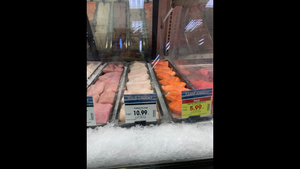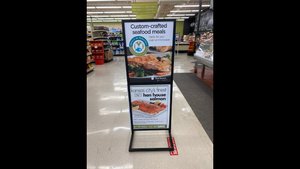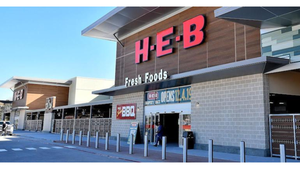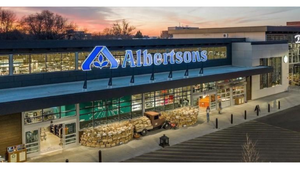Dialing for Dollars
During a conference call with analysts in January, Howard R. Levine, chairman and chief executive officer of small-format discounter Family Dollar Stores, and son of the founder, talked about marketing initiatives expected to help the company accelerate its top-line growth. Among the initiatives are: strengthening assortments, particularly in the consumables category; realigning adjacencies to improve
March 22, 2010
MICHAEL GARRY
During a conference call with analysts in January, Howard R. Levine, chairman and chief executive officer of small-format discounter Family Dollar Stores, and son of the founder, talked about marketing initiatives expected to help the company accelerate its top-line growth.
Among the initiatives are: strengthening assortments, particularly in the consumables category; realigning adjacencies to improve the shopping experience; and expanding hours. Adjacencies have been realigned already at 55% of the chain's 6,655 locations, “and those stores are outperforming stores that have not yet made changes,” he said. Another 1,000 stores will be realigned this year. The stores' footprint averages around 8,000 square feet.
In addition, operating hours have been expanded at approximately 15% of stores, and the chain intends to expand hours in “all stores by the end of the second quarter,” Levine said. He added that Family Dollar, based in Matthews, N.C., will continue to use circulars to communicate value, though the chain is still primarily an EDLP operator, with most of its products priced under $10.
All of these moves, and others, have the effect of making Family Dollar — which, at $7.4 billion in fiscal 2009 volume, is the second-largest dollar-store format after Dollar General — a tougher competitor for mainstream supermarket operators. And what is helping both Family Dollar and Dollar General optimize their merchandising, marketing and operating strategies is testing and data-analysis technology from Applied Predictive Technologies, Arlington, Va. APT's applications are also used by food retailers such as Food Lion, Meijer and Supervalu.
Also of concern to supermarkets: While about 60% of Family Dollar's customers have annual incomes under $40,000, the chain is trying to broaden its appeal to middle-income customers with incomes of $40,000 to $70,000, who have accounted for 40% of growth, according to R. James Kelly, Family Dollar's president and chief operating officer. Helping to expand its reach is the chain's aggressive growth policy, under which it has opened hundreds of new stores per year over the past decade.
But what makes Family Dollar an even more formidable competitor to conventional food retailers is that most of its growth, especially during the recession, has come from core consumables. Last year, one industry analyst estimated consumables sales exceeded 65%, up from 57% in 2005. Last July, the chain said it expected 40% of its stores to have shelf space reallocated from general merchandise to food and consumables during the current quarter.
A tour of one Family Dollar outlet in Danbury, Conn., revealed coolers stocking milk, cheese, pizza, ice cream and prepared meals. The store featured an assortment of Center Store items (such as cookies, crackers, snacks and canned goods) as well as paper goods, pet food, household items, general merchandise, health-and-beauty aids and a generous offering of laundry detergents. It also carried a variety of clothing, toys, stationery and small furnishings.
Kelly told analysts last November that Family Dollar would use its private-label laundry detergent, paper products and household cleaners “as our foundation to draw in a broad set of shoppers.”
Kelly also said the chain plans to begin tailoring its assortments for different neighborhoods. “Our model had been optimized for one-size-fits-all, and we really lacked the capabilities to do different things in different stores or different neighborhoods.”
TEST & LEARN
Family Dollar no longer lacks the capability to try different things. Over the past three years, as it has evolved as a business, the chain has invested in technology that helps it make better, more fact-based decisions concerning changes in products, promotions, hours of operation, shopper demographics and other areas.
In particular, the chain has implemented two of APT's applications — the Test & Learn Management System over the past 2½ years and the Market Basket Analyzer over the past year — both on a software-as-a-service basis. (APT decline to provide the cost of the software.)
The Test & Learn system is a systematic way of assessing a proposed program to gain confidence that it can work if rolled out, either on a targeted basis or chainwide. It addresses three key issues, said Anthony Bruce, CEO of APT: a program's impact on key performance indicators; the situations in which a program will be more or less successful; and the ways in which a program can be modified to be optimally effective.
Test & Learn has helped Family Dollar answer the question, “Will this program work,” said Brian Strickland, divisional vice president of market strategy and business development research for Family Dollar, who spoke about the technology at a workshop in January at the National Retail Federation Convention & Expo in New York. The system has also helped the chain break down whether a program can be “targeted by store, market or customer,” he added. Family Dollar has applied it to initiatives in operations, labor, marketing, merchandising, advertising, renovations, new stores and capital investment.
“Testing is an important part of the culture at Family Dollar,” said Trip McCoy, the chain's manager of promotion analytics, during an APT-sponsored webinar last week. “The payback has been significant from a learning perspective.” He also pointed out how costly it could be for a chain of Family Dollar's size to roll out untested programs.
The Test & Learn process starts with questions from marketing, merchandising and operations executives, who ask whether a particular program or activity is financially viable. Strickland and his department work with the business departments on designing a test to evaluate a program's “maximum rollout potential,” he said. Sometimes test results will lead to a redesign of a program before it is rolled out.
Family Dollar's testing team consists of three analysts and Strickland, who oversees the team. The number of stores in a test varies, but if a program requires a significant lift to be considered successful, the test will involve fewer stores; if it requires a smaller lift, the test would have more stores, said Strickland. McCoy said that it is important “that we have a large sample size so that we can dissect test results and look for differences.”
Graeme McVie, senior vice president at APT, who also participated in the webinar last week, noted that APT's software helps determine how many stores are needed in a test and whether those stores are representative of the chain. He stressed that finding the correct match of test and control stores is key to a successful test.
For a circular promotion, the Test & Learn system will compare a group of stores that have mailed circulars to shoppers with a control group that has not mailed them. “We look at the performance of stores prior to and after the event and compare it to the control group,” said Strickland. “The net change is attributable to the promotion.”
McCoy said this testing method is a better way to estimate sales impacts of promotions and make decisions than simply comparing one year with the previous year; the latter approach “doesn't account for sales patterns leading up to the activity date or short-term changes resulting from the test.” Circular tests are conducted on a monthly basis to answer questions such as format, product selection, length of promotion and drop dates, he noted.
Strickland also looks at the supply chain implications of promotions and lets the financial planning group know their impact on the company and the budgeting process.
In analyzing promotions, Family Dollar aggregates the promotional lift achieved by individual stores so that the differences among regions can be studied. Lift data is also segmented by income level and in various other ways. “Segmentation is an important component of what we do,” said McCoy. “We have a diverse customer base, and it's important to see which customer segments are responding to a circular and then tailor the distribution to these areas. We're building a winner's profile.”
Family Dollar has established a standard of $4 for the minimum required impact on store sales per dollar spent on circular promotions, said McCoy. “We've targeted $4 as being the required lift to meet our ROI requirements,” he said. For example, if $10,000 is spent on a circular, it needs to lift sales by at least $40,000 to be considered effective.
By establishing a minimum threshold, Family Dollar can identify high- and low-performing markets and “make adjustments where necessary to raise the bar,” said McCoy. The chain measures stores based on how often they participate in promotions over the past six months and how often they meet or surpass the threshold. “In troubled areas, we might need to reexamine our current media spend or media vehicle to lower costs. Or we might reexamine the circular's message to drive a greater response.”
ANALYZING BASKETS
At the NRF Conference, Strickland also described how Family Dollar is leveraging the Market Basket Analyzer application, in concert with Test & Learn, to understand the impact of promotions, advertising, store hours and other factors on the size of market baskets, or individual transactions.
Market basket analysis has changed the way Family Dollar looks at promotions such as circulars. Traditionally, the chain would consider the impact of a circular promotion on individual product sales, but the APT system allows it to understand how basket sizes are affected. “We're using these insights to refocus our category and product marketing efforts,” said Strickland.
While Family Dollar knows that circulars increase basket size, the chain looks for ways to expand basket size further by getting shoppers to buy more promoted items, without damaging margins; strategies include promoting items with affinities (tend to be purchased together) such as milk and cookies or “using themes to create special trips,” said McCoy.
The market basket system also shows how much each promoted product is driving the incremental lift in market baskets. Strickland used a hypothetical example comparing laundry and underwear. When both are promoted in a circular, their individual sales lifts may be the same. But in terms of their impact on basket size, “featuring laundry detergent in a circular may be twice as valuable as featuring underwear,” said Strickland. The chain incorporates these findings in selecting products for circulars as well as how much circular space to allocate to them, said McCoy.
The market basket tool allows merchants at Family Dollar to “understand what's happening within the categories they manage,” said Strickland. The system differentiates between “riders” — products that are found in small baskets — and “drivers” — products that tend to be in larger baskets. The same analysis can be applied to new product introductions: Is a new product driving incremental lift or just an “add-on.”
“Our merchandising team really likes these insights,” Strickland said, adding that the company has been trying to get analytical tools in the hands of merchants so they can “make better decisions.” McCoy called this “a work in progress.”
According to Bruce, retailers can leverage transactional analysis more effectively than in the past because of the better availability of data and greater computational speed. “Traditionally, transaction analysis and market basket analysis has been a one-off, episodic exercise,” he said. But greater computing speed can put it “in the hands of all marketers and merchants,” enabling them to make daily decisions about promotions, new products and assortments.
The system also tells what percentage of a promotion's lift is driven by baskets that contain circular items. If a large percentage of the lift is accounted for by a small percentage of the baskets, “we can take a hard look at those baskets and understand what's happening in those situations,” said Strickland. For example, the chain might look at whether a store's promotion is being used primarily by cherry-pickers coming in just for the promoted items. This is allowing the chain to “make more informed decisions” regarding promotions and where a circular should be distributed, he said.
Through Test & Learn, Family Dollar and other retailers are trying to figure out how to optimize distribution of circulars, said Bruce. “They're asking, ‘How widely should we distribute this? As I go further out, where do I start reaching the breaking point on lift?’”
The APT systems also enable Family Dollar to examine what products are being sold at what time of the day, the better to evaluate the chain's extended hours program. The company can also look at how sales habits change based on the day of the week. Knowing what products are selling on weekends, for example, helps the store operations team improve its replenishment efforts, noted Strickland.
Market basket analysis is especially important to a discount operator like Family Dollar that works on lower margins than Target or Wal-Mart, said Doron Levy, president, Captus Business Consulting, Toronto. “For Family Dollar, it is imperative that each customer purchase do as much as possible to maintain and increase margin and thus profitability,” he said. “Working with private label and other types of generics increases that margin considerably, so it is in their best interest to have a strategy to build a bigger basket. You will also see decreases in overhead when you sell more per transaction.”
About the Author
You May Also Like






